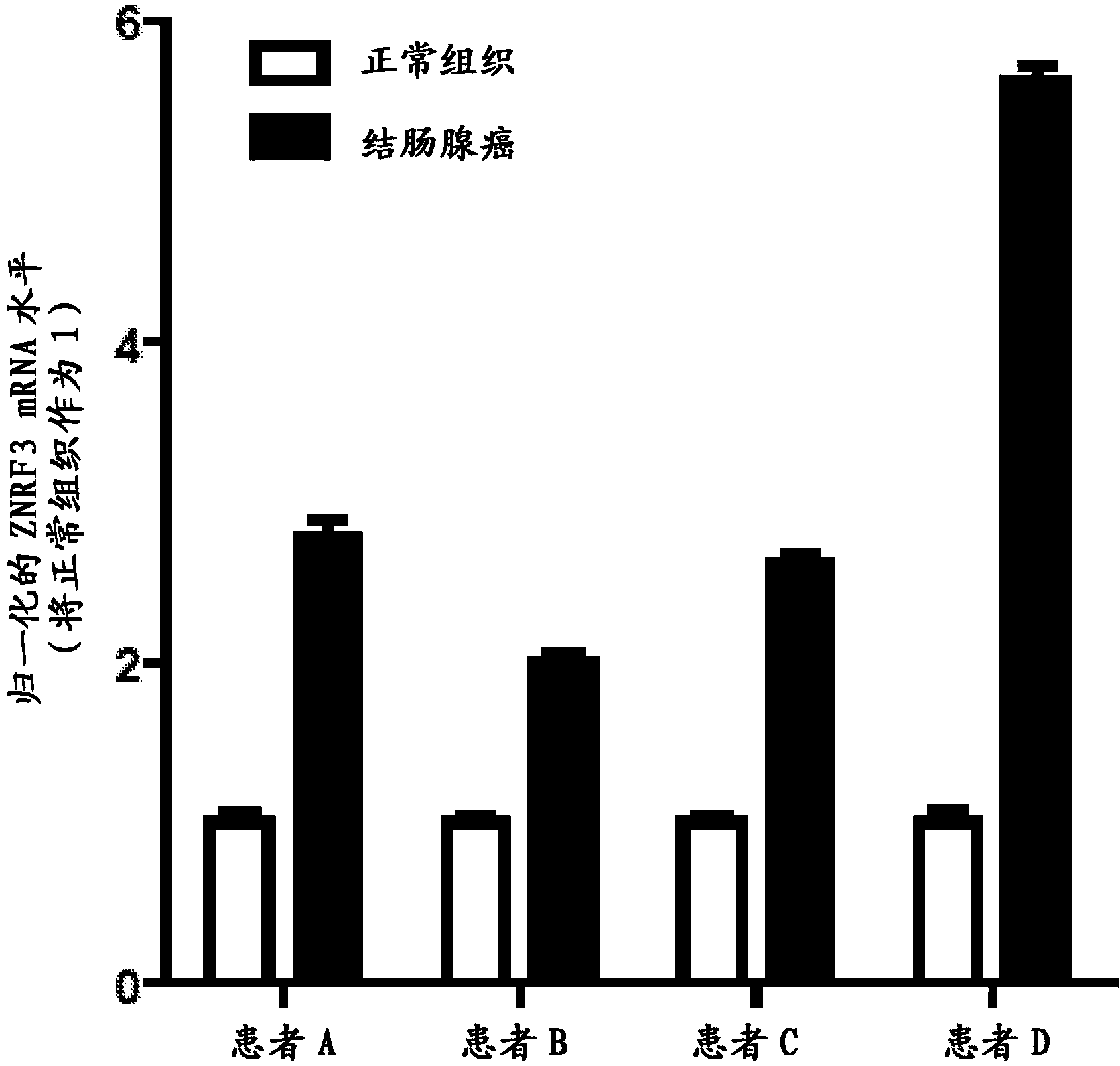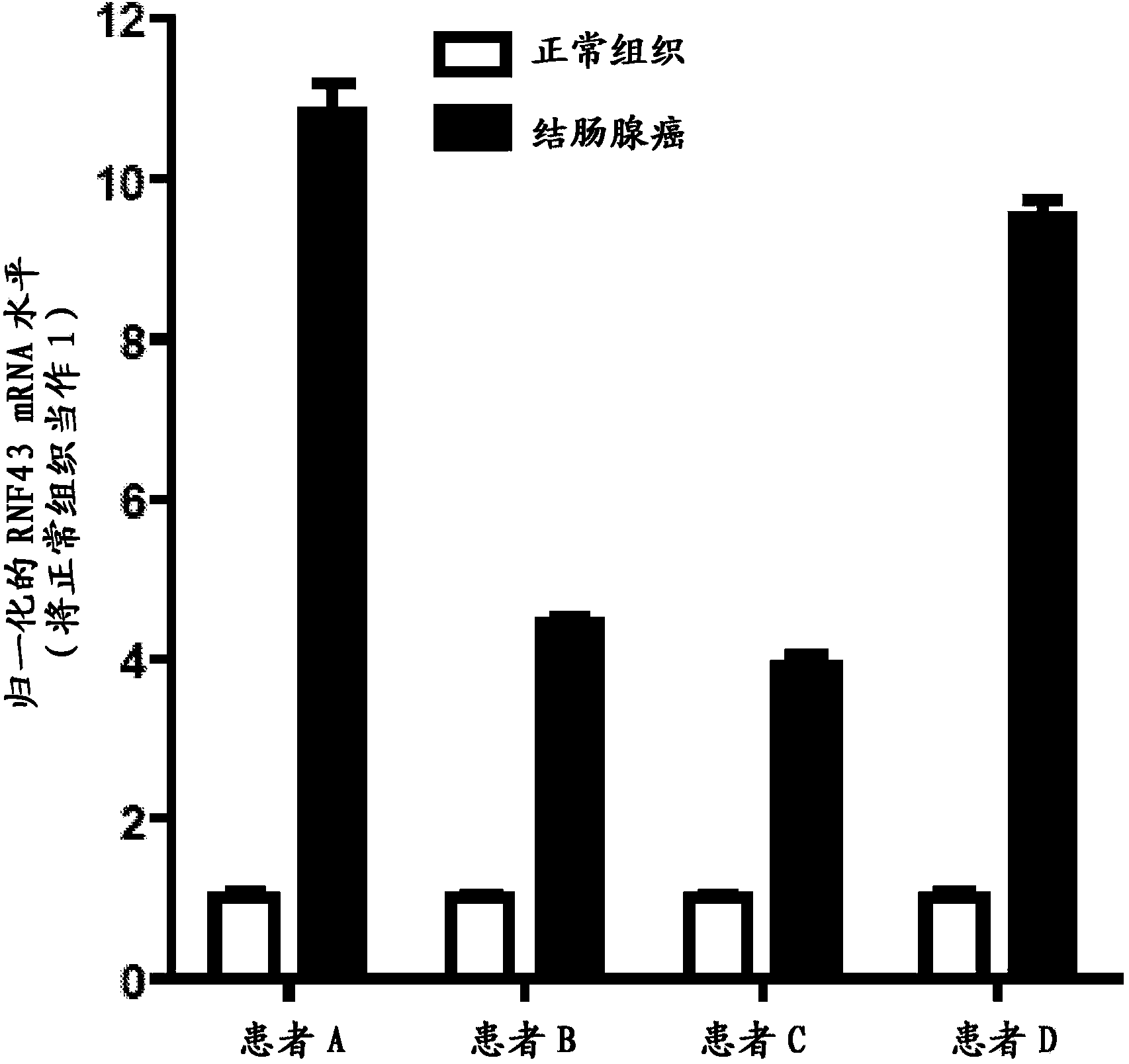Antibodies and methods for Wnt pathway-related diseases
An antibody and antigen technology, applied in the field of antibodies binding to ZNRF3 protein or RNF43 protein, can solve the problem of less protein
- Summary
- Abstract
- Description
- Claims
- Application Information
AI Technical Summary
Problems solved by technology
Method used
Image
Examples
Embodiment Construction
[0030] The present invention provides the following: First, ZNRF3 and RNF43 are cell surface proteins, so it is possible to use them as drug targets after the antibody binds to ZNRF3 or RNF43. Second, ZNRF3 and RNF43 are negative regulators of β-catenin and Wnt signaling pathways. Inhibition of ZNRF3 by using siRNA or by expressing a dominant negative mutant ZNRF3 protein resulted in increased Wnt signaling. Third, RNF43 is a functional homologue of ZNRF3. Fourth, an anti-ZNRF3 antibody that binds to the extracellular domain of the protein mimics inhibition of ZNRF3 either by using siRNA or by expressing a dominant negative mutant ZNRF3 protein, resulting in enhanced Wnt signaling. Fifth, various types of anti-ZNRF3 or RNF43 antibodies that bind to the extracellular domain of proteins can be produced by known methods for producing antibodies with specific binding. Sixth, inhibition of ZNRF3 enhances Wnt / β-catenin signaling and disrupts Wnt / PCP signaling in vivo. Seventh, th...
PUM
 Login to View More
Login to View More Abstract
Description
Claims
Application Information
 Login to View More
Login to View More - R&D
- Intellectual Property
- Life Sciences
- Materials
- Tech Scout
- Unparalleled Data Quality
- Higher Quality Content
- 60% Fewer Hallucinations
Browse by: Latest US Patents, China's latest patents, Technical Efficacy Thesaurus, Application Domain, Technology Topic, Popular Technical Reports.
© 2025 PatSnap. All rights reserved.Legal|Privacy policy|Modern Slavery Act Transparency Statement|Sitemap|About US| Contact US: help@patsnap.com



